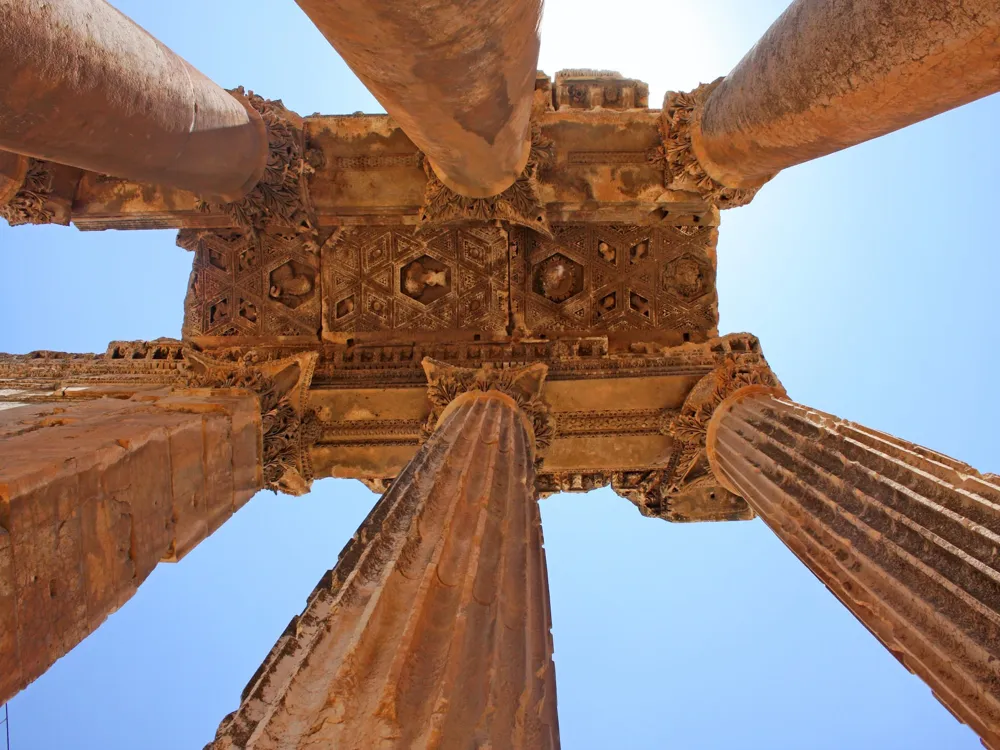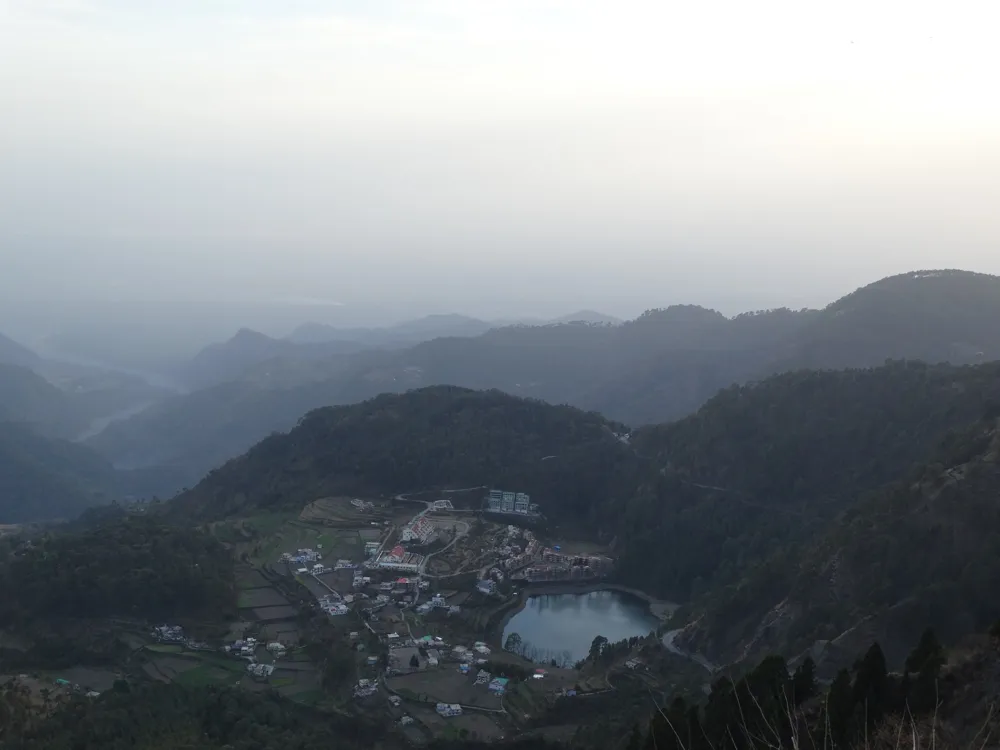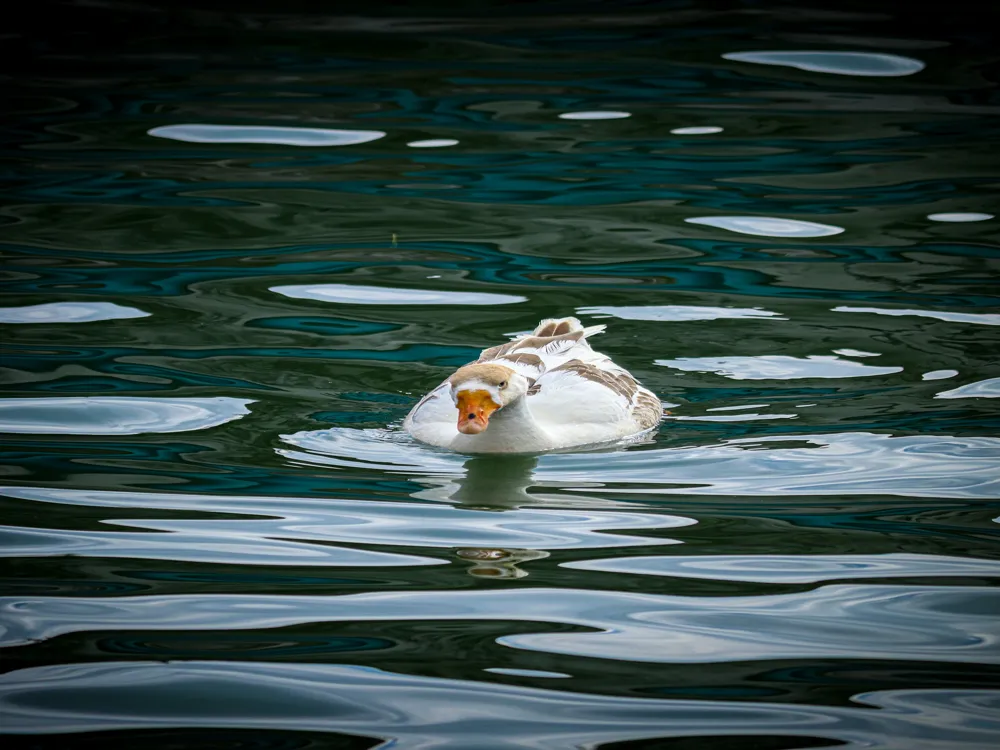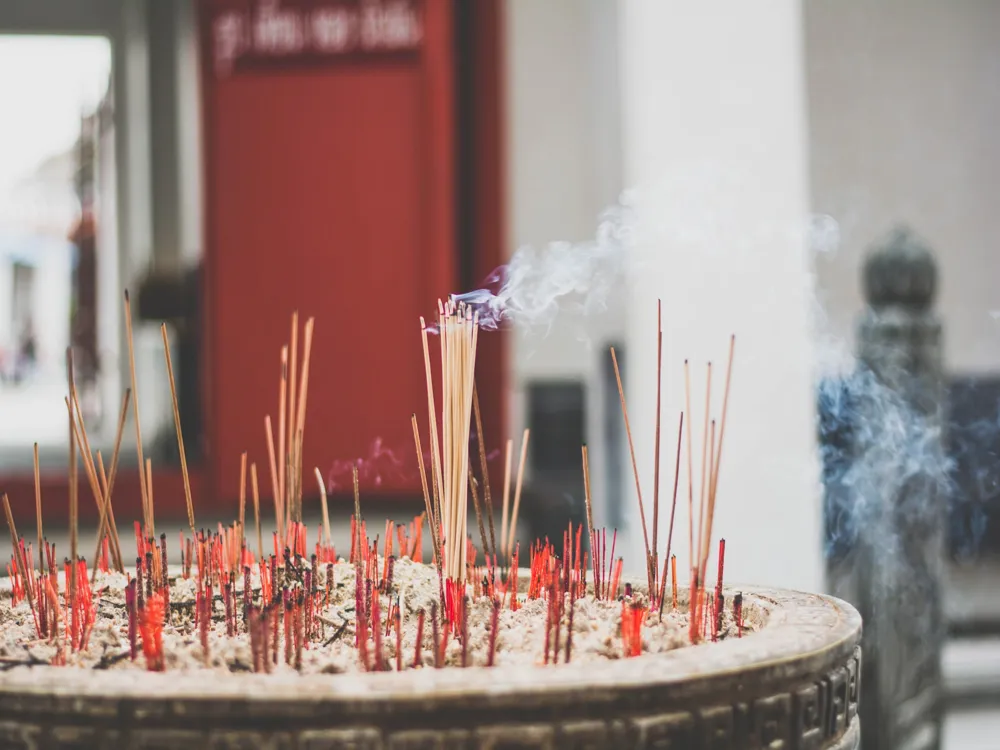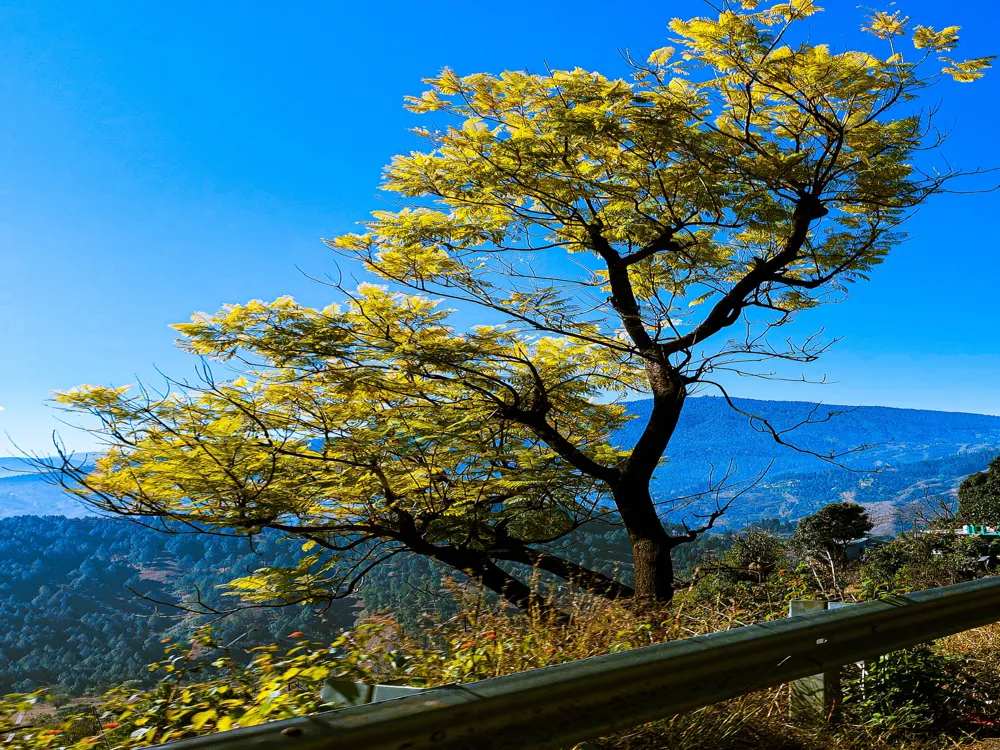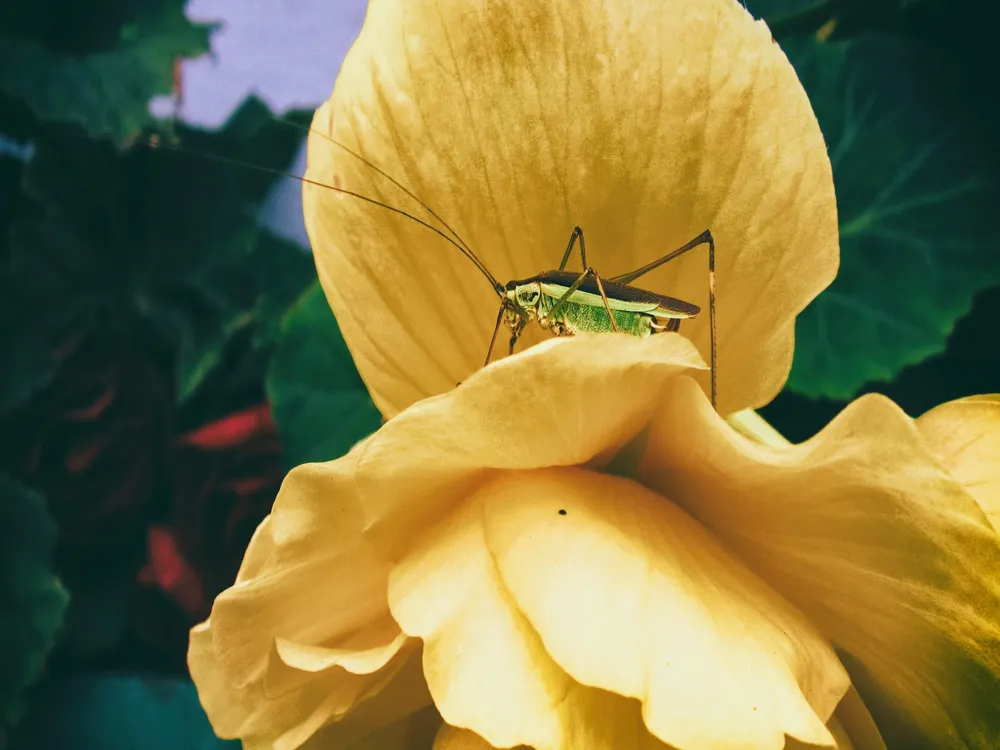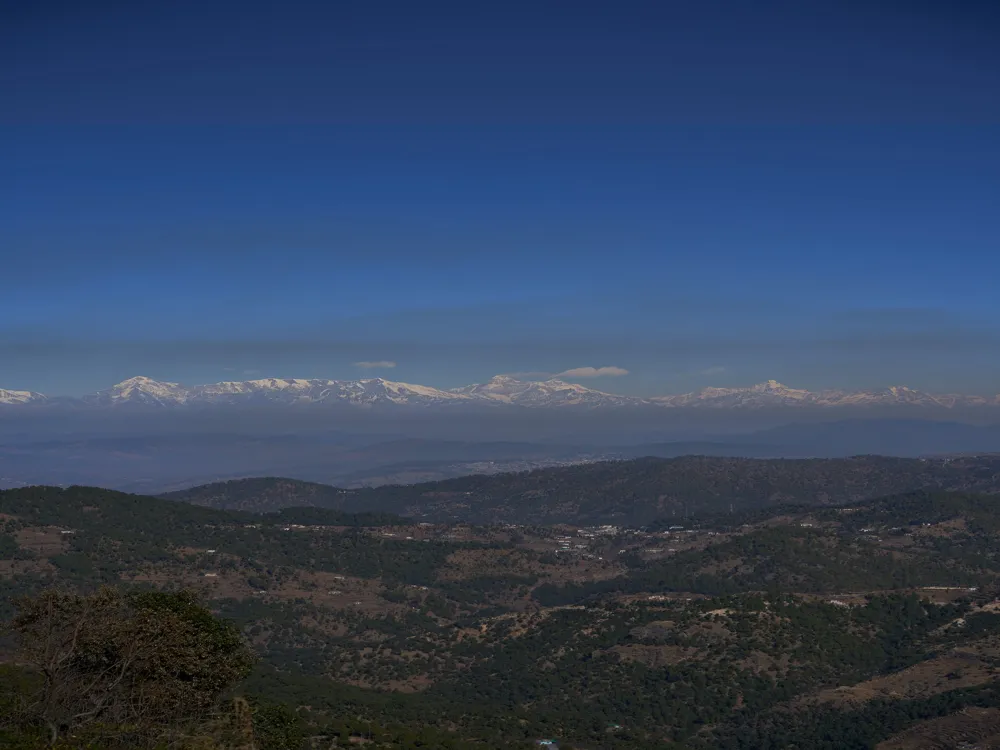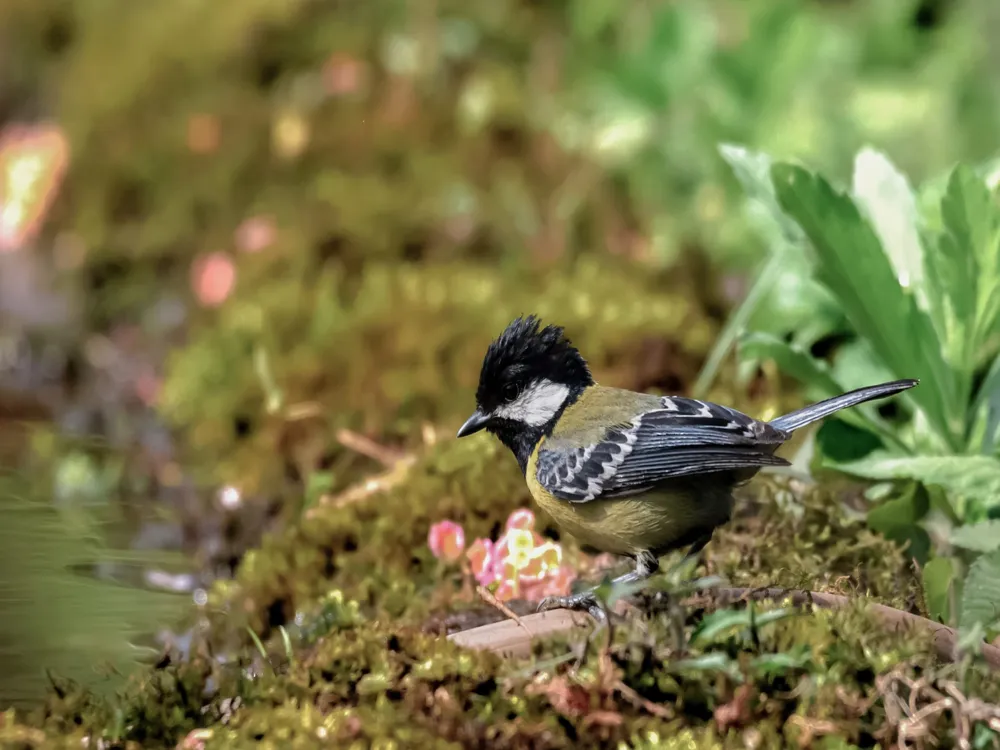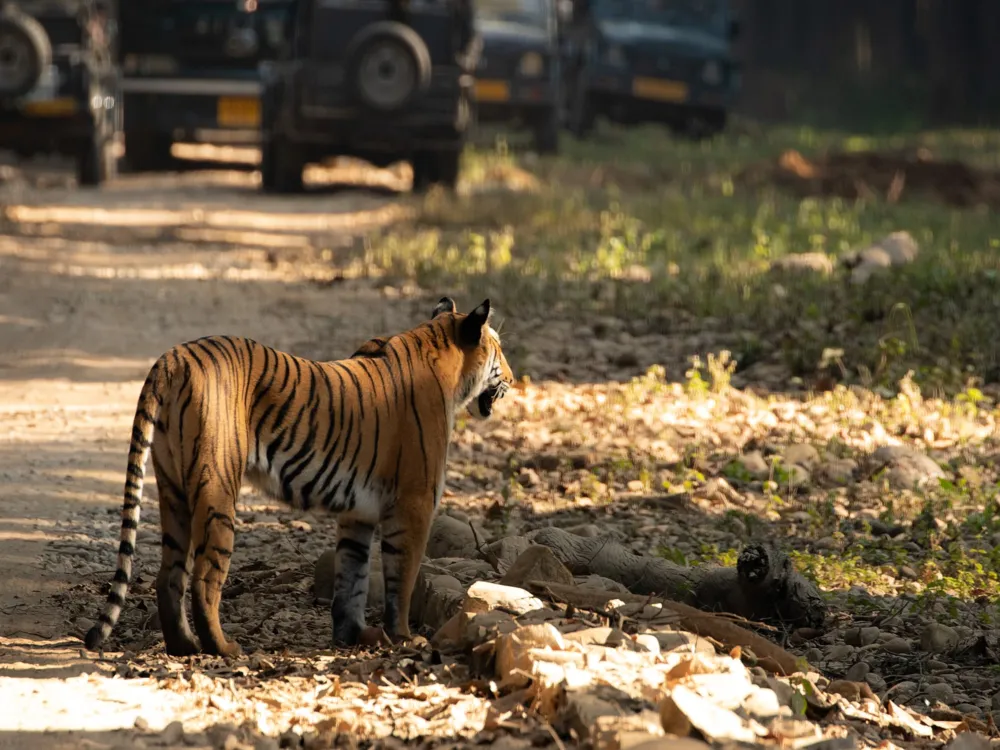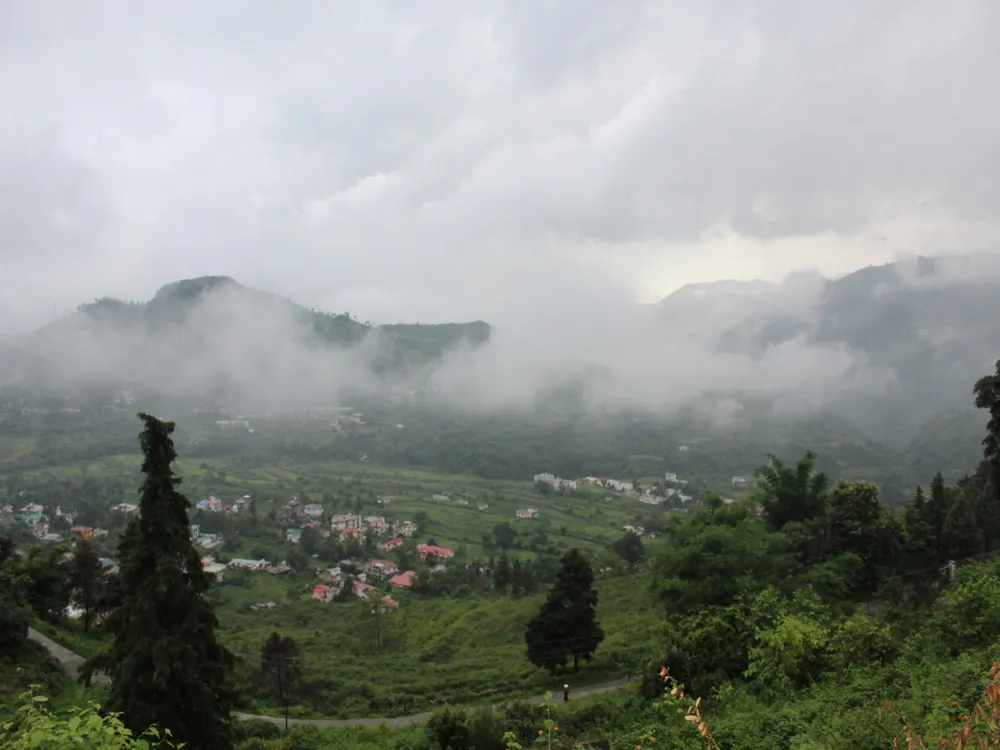Bhimtal Lake, nestled in the Kumaon region of Uttarakhand, India, is a tranquil and picturesque freshwater body. This idyllic lake is named after Bhima, a mythical character from the Indian epic Mahabharata, symbolizing its deep cultural and historical significance. Bhimtal Lake is not just a scenic spot but also a critical ecosystem supporting a variety of flora and fauna. The lake's serene waters reflect the enchanting surroundings, comprising lush greenery and rolling hills, creating a perfect harmony of natural beauty.
A distinguishing feature of Bhimtal Lake is the small island at its center, accessible by boat. This island adds a unique charm to the lake, making it a favorite among tourists and photographers. The climate around Bhimtal Lake is temperate, making it an ideal year-round destination. Visitors are treated to a visual feast of vibrant colors - greens during the monsoons, a palette of blooms in spring, and a golden hue in the autumn.
The lake also plays a crucial role in the local economy. It supports various activities such as boating, fishing, and aquaculture, providing livelihoods to many in the region. The tourism industry around Bhimtal Lake also contributes significantly to the economy, with numerous hotels, resorts, and eateries catering to visitors.
Bhimtal Lake's importance extends to its role in biodiversity conservation. It is home to several species of fish and a stopping point for migratory birds. The surrounding forests are rich in wildlife, including rare and endangered species, making Bhimtal Lake a vital part of the regional ecosystem.
The lake's tranquility and natural beauty have made it a popular destination for those seeking a peaceful retreat from the hustle and bustle of city life. Its crystal-clear waters, framed by the majestic Himalayan range, offer a serene backdrop for meditation, yoga, and spiritual rejuvenation. The area around Bhimtal Lake is dotted with ancient temples, adding a spiritual dimension to its natural beauty.
The architecture around Bhimtal Lake is a blend of traditional Kumaoni styles and modern designs. This blend is not just in the buildings but also in the overall layout and planning of the area surrounding the lake. Traditional Kumaoni architecture, characterized by slate-roofed houses, intricately carved wooden doors, and windows, is evident in many of the older structures around the lake. These buildings, made from locally sourced materials like wood, stone, and slate, reflect the harmony between the local community and their natural environment.
One of the architectural highlights near Bhimtal Lake is the Bhimeshwar Temple, dedicated to Lord Shiva. This ancient temple, believed to have been built by Bhima during the Pandavas' exile, showcases the classic North Indian temple architecture. The temple's magnificent structure, with its intricate carvings and stonework, stands as a testament to the region's rich cultural and historical heritage.
In recent years, the architecture around Bhimtal Lake has evolved to include contemporary designs. This modern architecture aims to offer comfort and luxury while minimizing environmental impact. Eco-friendly materials, sustainable practices, and green technologies are increasingly used in new constructions, blending modernity with the need for environmental conservation.
The layout of the area around Bhimtal Lake has been thoughtfully planned to enhance its natural beauty while providing necessary amenities to visitors. Walking paths, viewing points, and recreational areas are strategically placed to offer stunning views of the lake and surrounding landscapes. These elements are designed to blend with the natural environment, ensuring that the beauty of the lake remains unspoiled.
The architectural evolution around Bhimtal Lake is not just about buildings and structures. It also encompasses landscaping and urban planning, with a focus on preserving the lake's natural beauty and ecological balance. Efforts are made to maintain the lake's water quality and surrounding greenery, making it a model for sustainable tourism.
The ideal time to visit Bhimtal Lake is from March to June and September to November. These months offer pleasant weather, making it perfect for outdoor activities and exploring the surroundings.
Bhimtal offers a range of accommodations, from luxury resorts to budget guesthouses. Booking in advance is recommended, especially during peak tourist seasons.
Visitors can enjoy boating, bird watching, and nature walks. The adventurous can explore trekking trails and paragliding options in nearby areas.
Don't miss out on trying local Kumaoni cuisine, known for its unique flavors and ingredients. Several eateries around the lake offer delicious local dishes.
Tourists are encouraged to follow eco-friendly practices like avoiding plastic, not littering, and respecting the local flora and fauna.
Reaching Bhimtal Lake is convenient via road, rail, and air. The nearest airport is Pantnagar Airport, about 58 kilometers away. The closest railway station is Kathgodam, just 23 kilometers from Bhimtal. For those traveling by road, Bhimtal is well-connected with major cities like Delhi and Nainital through a network of highways.
Overview of Bhimtal Lake, Uttarakhand
Architecture of Bhimtal Lake
Tips When Visiting Bhimtal Lake
Best Time to Visit
Accommodations
Activities to Enjoy
Local Cuisine
Eco-Friendly Practices
How To Reach Bhimtal Lake
Bhimtal Lake
Bhimtal
Uttarakhand
NaN onwards
View bhimtal Packages
Weather :
Label : Must Visit
Tags : Lake
Timings : 9:00 AM - 6:00 PM
Time Required : 2-3 hrs
Entry Fee : No entry fee
Planning a Trip? Ask Your Question
Bhimtal Travel Packages
View All Packages For Bhimtal
Top Hotel Collections for Bhimtal

Private Pool

Luxury Hotels

5-Star Hotels

Pet Friendly
Top Hotels Near Bhimtal
Other Top Ranking Places In Bhimtal
View All Places To Visit In bhimtal
View bhimtal Packages
Weather :
Label : Must Visit
Tags : Lake
Timings : 9:00 AM - 6:00 PM
Time Required : 2-3 hrs
Entry Fee : No entry fee
Planning a Trip? Ask Your Question
Bhimtal Travel Packages
View All Packages For Bhimtal
Top Hotel Collections for Bhimtal

Private Pool

Luxury Hotels

5-Star Hotels

Pet Friendly








